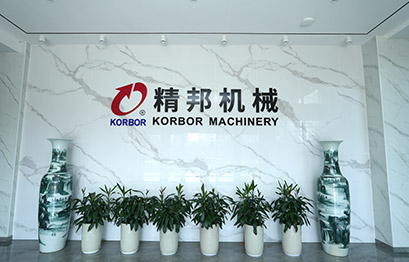In the manufacturing process of GM automobile camshafts, what key links play a decisive role in its precision and reliability?
In the manufacturing process of GM automobile camshafts, the following key links play a decisive role in its precision and reliability, some of which have something in common with the production process of Anhui KORBOR Machinery Co., Ltd.:
Material selection and inspection
Material properties: GM automobile camshafts usually use high-quality alloy steels, such as medium carbon steel or medium carbon alloy steel, which must have good strength, toughness and wear resistance to withstand the high load and frequent friction during engine operation. Just like Anhui KORBOR Machinery Co., Ltd. will choose high-performance alloys to ensure the performance of the camshaft under various working conditions.
Quality inspection: Strict inspection of raw materials, including chemical composition analysis, hardness testing, metallographic structure inspection, etc., to ensure the stability and consistency of material quality and prevent material defects from affecting the precision and reliability of the camshaft.
Forging process
Blank forming: The raw material is processed into the approximate shape of the camshaft through the forging process. Parameters such as pressure, temperature and forging ratio during the forging process have an important influence on the internal structure and performance of the camshaft. The appropriate forging ratio can refine the metal grains, improve the strength and toughness of the material, and enhance the reliability of the camshaft.
Allowance control: Accurately control the allowance after forging to provide a suitable blank for subsequent processing procedures. Too large or too small an allowance will affect the processing accuracy and efficiency.
Machining
Cam profile processing: Use high-precision CNC processing equipment, such as CNC grinders, CNC lathes, etc., to precisely process the cam profile of the camshaft to ensure that the cam lift, phase angle and other parameters meet the design requirements. This is directly related to the engine's valve timing and valve opening, affecting the engine's power output and performance stability.
Journal processing: The machining accuracy of the journal is crucial to the rotation accuracy and reliability of the camshaft. It is necessary to ensure the dimensional accuracy, cylindricity, surface roughness and other indicators of the journal to reduce friction loss and increase the service life of the camshaft.
Keyway and oil hole processing: accurately process keyways and oil holes to ensure their position accuracy and dimensional accuracy. Keyways are used to install components such as timing gears, and oil holes provide lubrication and cooling for camshafts. Insufficient processing accuracy may lead to loose installation of components or poor lubrication, affecting the normal operation of the camshaft.
Heat treatment
Quenching: The quenching process used by Anhui KORBOR Machinery Co., Ltd. can make the camshaft surface obtain high hardness and wear resistance, improve its fatigue resistance and wear resistance, but the parameters such as heating rate and cooling rate during the quenching process need to be precisely controlled, otherwise quenching cracks, deformation and other defects may occur, affecting the accuracy and reliability of the camshaft.
Tempering: Tempering is an important process to eliminate quenching stress, stabilize the organization and improve toughness. Appropriate tempering temperature and time can improve the comprehensive performance of the camshaft and prevent failures such as breakage during use.
Carburizing treatment: For some camshafts that require higher surface hardness and wear resistance, carburizing treatment will be carried out to increase the surface carbon content, form a hard and wear-resistant carburized layer, and improve the wear and corrosion resistance of the camshaft.
Surface treatment
Nitriding treatment: A nitriding layer with high hardness and good wear resistance is formed on the surface of the camshaft through nitriding treatment, which can improve the surface hardness, corrosion resistance and lubrication performance of the camshaft, reduce the friction coefficient, reduce wear, and extend the service life of the camshaft.
Coating treatment: A special coating, such as molybdenum disulfide coating, is applied to the surface of the camshaft to further improve its lubrication and wear resistance. Especially under boundary lubrication conditions such as engine start and stop, the coating can effectively protect the camshaft surface.
Detection and assembly
Precision detection: Use precision detection equipment such as three-coordinate measuring instruments to conduct comprehensive inspections on various dimensional parameters, form and position tolerances of the camshaft to ensure that the processing accuracy of the camshaft meets the design standards, and timely repair or scrap unqualified products.
Dynamic balancing test: When the camshaft rotates at high speed, the unbalanced amount will generate additional inertia force and torque, affecting the stability and reliability of the engine. Therefore, dynamic balancing test and adjustment are required to control the unbalanced amount of the camshaft within the allowable range.
Assembly process: During the assembly process, strictly follow the assembly process requirements to ensure that the matching clearance and installation position of the camshaft and other components are accurate. For example, the installation accuracy of the timing gear and the assembly clearance of the camshaft bearing directly affect the working performance and reliability of the camshaft.

 English
English 中文简体
中文简体 русский
русский Español
Español





















